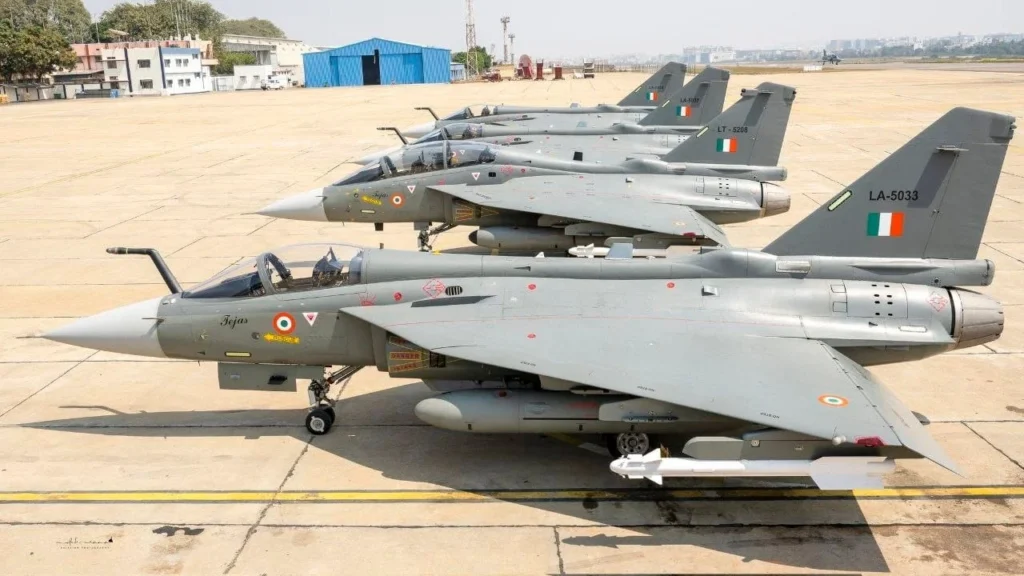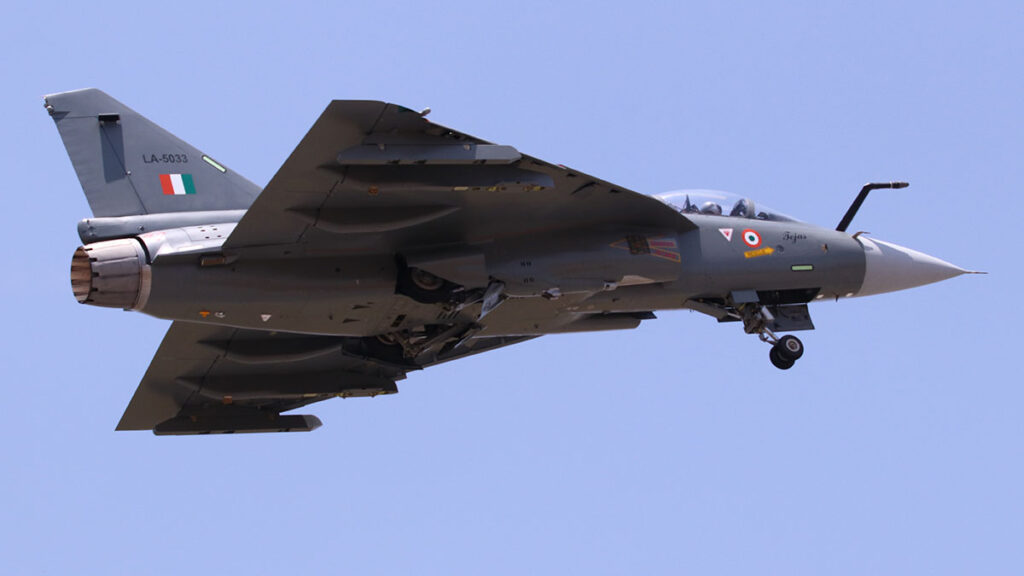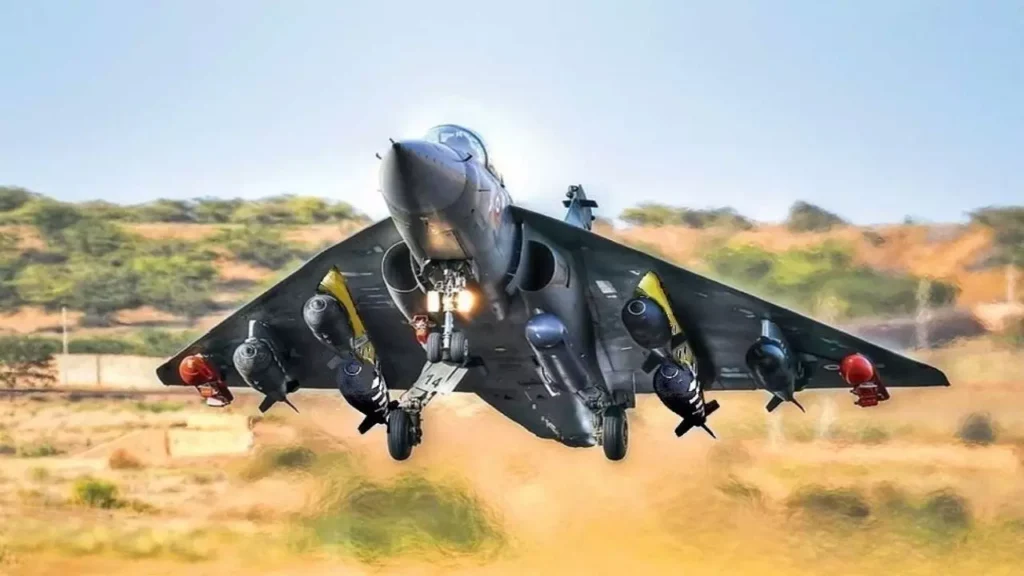YTC Ventures | Technocrat’ Magazine
October 17, 2025
In a spectacle that blended cutting-edge engineering with national pride, the Light Combat Aircraft (LCA) Tejas Mk1A—India’s homegrown marvel of aerospace innovation—completed its maiden flight today from Hindustan Aeronautics Limited’s (HAL) Nashik facility. The 18-minute sortie, piloted by veteran test pilot Group Captain K.K. Venugopal (Retd.), marked not just a technical triumph but a resounding endorsement of India’s “Aatmanirbhar Bharat” (Self-Reliant India) vision in defense manufacturing.
As arcs of water from fire tenders arched skyward in a ceremonial salute, the jet’s graceful ascent symbolized a pivotal shift: from dependency on foreign fleets to indigenous dominance in the skies.Defence Minister Rajnath Singh, who inaugurated HAL’s third production line for the Tejas Mk1A alongside the second line for the Hindustan Turbo Trainer-40 (HTT-40), hailed the moment as the dawn of a “new era in Made-in-India fighters and trainers.”

“This is not only an industrial achievement but a testament to the hard work, dedication, and dreams of our youth, engineers, and scientists,” Singh remarked during the event, underscoring the collaborative spirit between government, industry, and academia that propelled this feat. The flypast by a Sukhoi Su-30MKI and the HTT-40 formation added a dramatic flair, evoking the roar of India’s evolving air power.
A Legacy of Resilience: From Tejas Roots to Mk1A Evolution
The Tejas program, conceived in the 1980s amid geopolitical turbulence, has been a saga of perseverance. The original Tejas Mk1, inducted into the Indian Air Force (IAF) in 2015, overcame delays in engine integration and avionics to become a cornerstone of India’s light fighter fleet. Today, with the MiG-21 “Bison” squadrons finally retired last month, the Mk1A steps up as their sophisticated successor—sleeker, deadlier, and smarter.What sets the Mk1A apart? This 4.5-generation multirole fighter boasts an indigenous content of over 64%, a quantum leap from its predecessors. Powered by the GE Aerospace F404-IN20 engine, it features:
- Active Electronically Scanned Array (AESA) Radar: Either the Israeli EL/M-2052 or the homegrown Uttam AESA, enabling superior target detection and tracking in contested airspace.
- Enhanced Electronic Warfare (EW) Suite: Integrated self-protection jammers and digital flight control computers for agility in high-threat environments.
- Advanced Avionics and Weapons Integration: Compatibility with beyond-visual-range missiles like the Astra, precision-guided bombs, and air-to-air refueling probes for extended missions.
- Aerodynamic Refinements: Reduced supersonic drag via composite materials and streamlined pylons, boosting speed to Mach 1.6 and a combat radius exceeding 500 km.
HAL Chairman D.K. Sunil called the Nashik rollout—achieved in a record two years—a “big achievement,” highlighting the facility’s upgrade with over 30 assembly jigs for fuselages, wings, and air intakes. Backed by a Rs 500 crore investment across 1.3 million square feet, Nashik’s line will churn out eight jets annually, elevating HAL’s total capacity to 24 Mk1As per year when combined with Bengaluru’s two lines.

This surge addresses the IAF’s urgent need for 30-40 fighters yearly to counter depleting squadron strengths.The Rs 48,000 crore contract for 83 Mk1As, inked in 2021, is already materializing: ten jets are on the assembly line, with the first deliveries slated for late October. Yet, full induction awaits rigorous weapon and radar trials at HAL’s Nashik test range, ensuring seamless integration before frontline deployment.
Strategic Skies: Why the Mk1A Redefines India’s Air Doctrine
In an era where air superiority hinges on technological edge, the Tejas Mk1A is more than a jet—it’s a strategic multiplier. Designed for versatility, it excels in air-to-air combat, ground strikes, and reconnaissance, filling critical gaps left by heavier platforms like the Rafale or Su-30MKI. Experts dub it the “Arjun of the skies,” a nod to India’s indigenous tank that proved doubters wrong through iterative excellence.

Geopolitically, the Mk1A fortifies India’s borders amid rising tensions with China and Pakistan. Its AESA radar outclasses rivals like Pakistan’s JF-17, offering extended detection ranges and electronic countermeasures that could tip the scales in dogfights or standoff engagements. Moreover, it paves the way for the Tejas Mk2 (medium-weight fighter) and the fifth-generation Advanced Medium Combat Aircraft (AMCA), positioning India as a global exporter in the $100 billion defense aviation market.On X, the buzz is electric.
Users shared videos of the flight, captioning it a “historic leap,” while others quoted HAL’s Sunil on the two-year milestone. Footage of Venugopal praising the jet’s “ultra-modern sensors and superior weapons” has racked up thousands of views, amplifying national fervor.
The Road Ahead: Challenges and Horizons
No triumph is without hurdles. Supply chain snarls—particularly GE engines—delayed earlier timelines, but Nashik’s ramp-up signals resolution.
As India eyes 114 more Mk1As and potential foreign sales, sustaining 70-80% indigenization will be key, especially for stealth features in future variants.Yet, today’s flight transcends metrics. It’s a clarion call for STEM innovation, echoing Singh’s words: “When we work together, no challenge is insurmountable.” As the Tejas Mk1A climbs higher, so does India’s stature on the world stage—a technocratic testament to ingenuity over imitation.
Trending Now on Technocrat: Tejas vs. Global Peers: A Specs Breakdown | AMCA: India’s Stealth Ambition | HAL’s Rs 500 Cr Nashik Overhaul

Comments